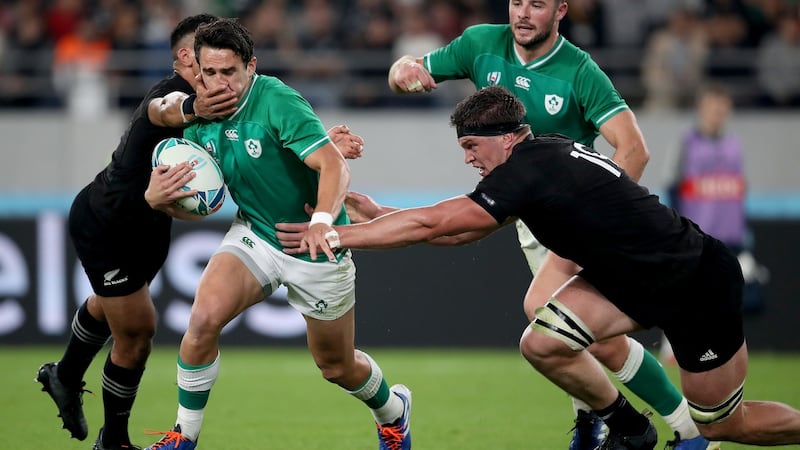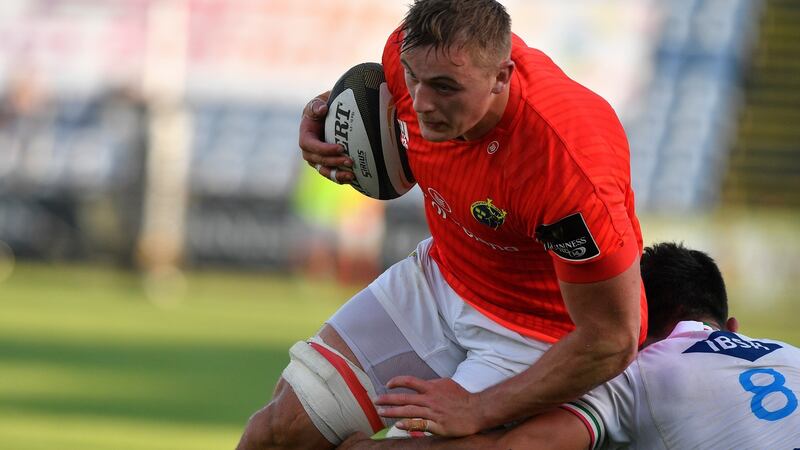The importance of salvaging two Tests this summer from the wreckage of the pandemic is simply underlined by the 37-man squad named yesterday. Home games against Japan and the USA might not seem like much but halfway through the latest World Cup cycle they are like gold dust.
Ireland are not unique in missing out on successive summer tours – in their case to Australia and Fiji – but that only makes these games more invaluable.
For sure, a three-test tour to Fiji would have been even more informative, and not just as it meant three games instead of two. Away from home, in front of capacity home crowds of 15,000, in difficult and unfamiliar conditions, Andy Farrell and co could have learned so much more about the players in a touring environment, especially in the context of the 2023 World Cup in France.
Tours in the same summer as a Lions’ expedition offer gilt-edged opportunities against Tier 2 countries in a way that the November home series, the Six Nations and most definitely a three-Test tour such as next year’s to New Zealand, simply do not.
In the last five summer tours which have coincided with the Lions heading to the southern hemisphere, Ireland have blooded 32 players at Test level.
Eight players were given debuts in the USA and Japan four years ago, a figure which was actually eclipsed when nine players made their debuts on the North American tour of 2009.
But, all in all it was probably the most fruitful of the five tours, given James Ryan, Jacob Stockdale and Andrew Porter were all contributors to the golden year of 2018 and were well established come the 2019 World Cup.
Admittedly, their time would have come anyway. Ryan had captained the Ireland Under-20s team which reached the World Cup final in 2016, with Porter and Stockdale star turns (and Hugo Keenan). Joe Schmidt fast-tracked Ryan into that senior squad an injury disrupted year later, while player management had seen Porter switch from loosehead to tighthead.
Viewed in that light, clearly nothing like all of the 11 uncapped players in this squad will be established in the Ireland squad come the 2023 World Cup. Nor indeed will two games offer Farrell scope to play every player in this 37-man squad which, of necessity in these times, had to be larger than would normally be the case.
Even so, considering Ireland’s representation in the Lions squad decreased from the tally of 11 players chosen four years ago to just eight, initially, this time, the squad named is both experimental and exciting.
In addition to the eight players selected by Warren Gatland, including the cruelly unlucky Porter, and five others either injured, departed or retired, it made absolute sense to excuse Johnny Sexton, Cian Healy and Keith Earls from these upcoming two Tests. There really is no drama there.

Another difference in this tour compared with the last five in Lions’ summers is that whereas they went under the radar a little, these will not only be on home soil but broadcast on RTÉ and Channel 4.
Interest will be heightened by there being a good spread across the four provinces. While Leinster are again bulk suppliers with 13 players, Munster have 10, Ulster eight and Connacht six. That is good to see, for there’s been an overt reliance on Leinster this past while, and Connacht’s tally might have been higher had Gavin Thornbury not undergone shoulder surgery four weeks ago.
Of the 11 uncapped players in this squad, if even three or four go to France 2023 that will be a good return.
Admittedly, Ireland's depth chart is being tested more severely, and looks better equipped to cope, in some areas more than others
Despite missing virtually a year with a bad hamstring injury, Robert Baloucoune has continued to look like a Test winger, scarcely missing a step, or a trademark swerve, since his return.
Akin to Joey Carbery, Harry Byrne does have something about him and while his older brother Ross can probably feel most aggrieved about missing out, their selection along with Billy Burns does signal an intent to play with the heads up freedom and tempo which Farrell is seeking.

Gavin Coombes has taken to frontline provincial/club rugby like a duck to water, witness a faintly ridiculous 15 tries in 22 games for Munster this season, not to mention fronting up against Leinster in the Pro14 final in the manner he did.
Who knows how many of the other eight uncapped players might revel in this window, or the seven players with five caps or less.
Admittedly, Ireland’s depth chart is being tested more severely, and looks better equipped to cope, in some areas more than others. For example, it would have been nice to see the classy James Hume in this squad, but then again even without Bundee Aki and Robbie Henshaw, Ireland are well stocked in midfield and Tom Daly has earned his call-up.
The absence of three frontline props means that of the six chosen in this squad, three have never started a Test and the other three have started only 19 between them.
Five backrowers who featured in the Six Nations are either Lions bound, injured or in the case of CJ Stander retiring, and so three of the six loose forwards are uncapped, as well as the locks Ross Molony and Fineen Wycherley, a sometime blindside.
Yet no less than Coombes this season, the form of Paul Boyle and Nick Timoney underlines the traditional strength in depth Irish rugby has usually had in the backrow, and with Caelan Doris also in mind, particularly so at number eight in the post-Stander era.
That said, Josh van der Flier looks like the only specialist openside in this squad and it would have been interesting to see Scott Penny (10 tries in 15 games this season) at this level.
But it's not just the 11 newcomers which add to the almost unexpected sense of anticipation. Farrell sounded particularly thrilled to welcome back other players from lengthy injuries, without naming them, but assuredly had Carbery and Doris in mind, for all being well they will be key components of the Ireland team for years to come. gthornley@irishtimes.com













